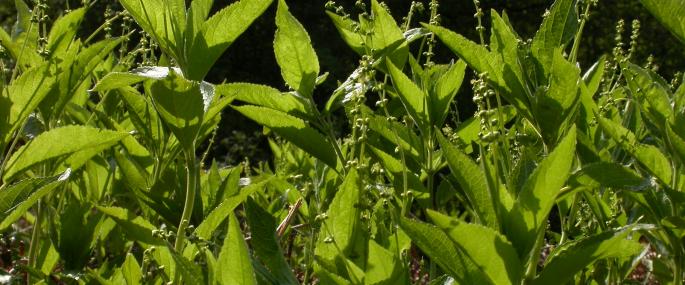A common plant often seen carpeting the floor of ancient woodlands, Dog's Mercury can quickly colonise and spread by its underground rhizomes (stems). It can be so expansive that it shades woodland floors and crowds out rarer species like Fly orchids and Oxlip. It produces small flowers from February to April, but leaves can persist throughout the year.
The Wildlife Trusts manage many woodland nature reserves sympathetically for a range of wildflowers. A mix of coppicing, scrub-cutting and ride maintenance open up the woodland floor to the sun, helping many flowers and plants to thrive and keeping others that spread easily, such as Dog's Mercury, under control. You can help too: volunteer for your local Wildlife Trust and you could be involved in everything from traditional forest crafts to raising awareness about woodland wildlife.
